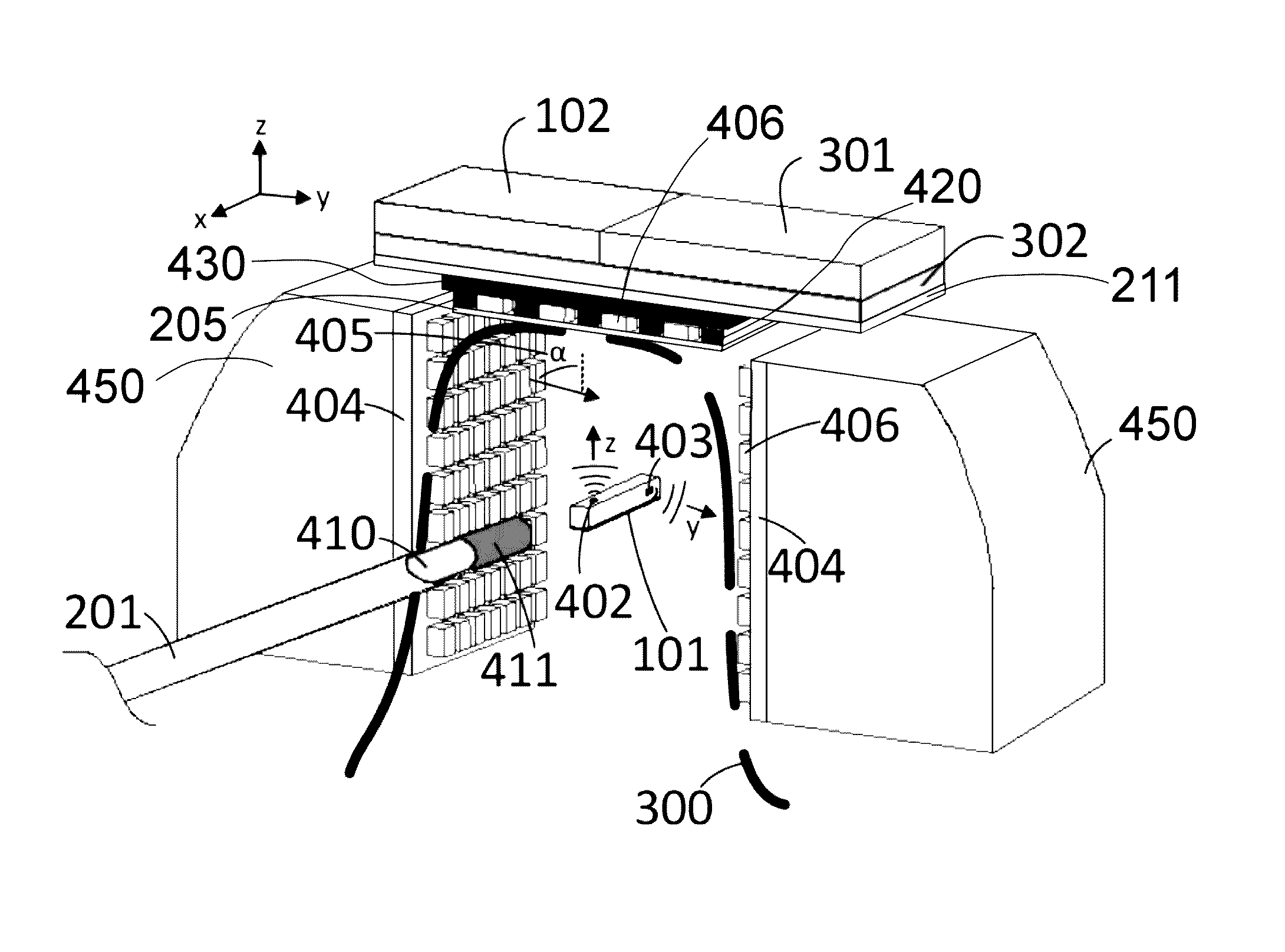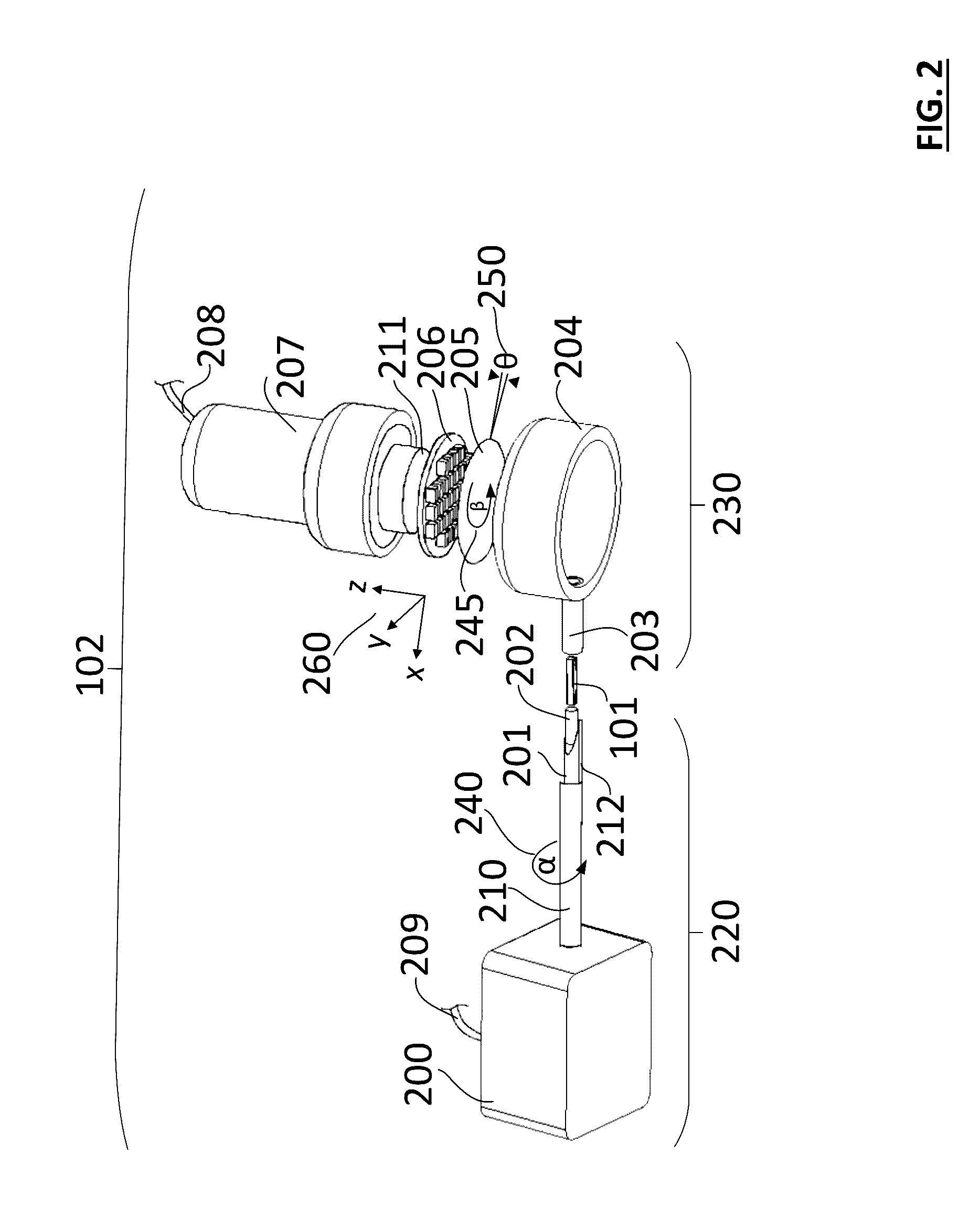Automated insertion and extraction of an implanted biosensor
a biosensor and automatic technology, applied in the field of automatic insertion and extraction of biosensors, can solve the problems of inoperable biosensors, reduced photovoltaic cells' effective absorption area, misalignment of on-board leds, etc., to facilitate pain-free injection, minimize cost, and optimize optical powering and communication protocols
- Summary
- Abstract
- Description
- Claims
- Application Information
AI Technical Summary
Benefits of technology
Problems solved by technology
Method used
Image
Examples
Embodiment Construction
[0023]Description of the Injection / Extraction System—FIG. 1 describes the automated insertion and extraction apparatus in terms of block diagram. The insertion and extraction module 102 communicates via Bluetooth or wires 104 to a computer / signal processing system 108. The computer / signal processing system 108 further comprises from a data acquisition unit 105, a microprocessor 106 and associated computer algorithms that generate a detailed two-dimensional (2D) and three-dimensional (3D) mapping / imagery 107 of the implantable biosensor 101 with respect to the skin 103. In one example, the insertion apparatus is used to inject a miniaturized biosensor 101 into a human extremity 100 in the vicinity of the skin 103 (e.g. in the subcutaneous space). The above example is directed toward humans; however, the invention can also apply to animals and plants.
[0024]The miniaturized implantable biosensor 101 is small enough in two of its dimensions (i.e. height and width) to fit through a hypod...
PUM
 Login to View More
Login to View More Abstract
Description
Claims
Application Information
 Login to View More
Login to View More - R&D
- Intellectual Property
- Life Sciences
- Materials
- Tech Scout
- Unparalleled Data Quality
- Higher Quality Content
- 60% Fewer Hallucinations
Browse by: Latest US Patents, China's latest patents, Technical Efficacy Thesaurus, Application Domain, Technology Topic, Popular Technical Reports.
© 2025 PatSnap. All rights reserved.Legal|Privacy policy|Modern Slavery Act Transparency Statement|Sitemap|About US| Contact US: help@patsnap.com



